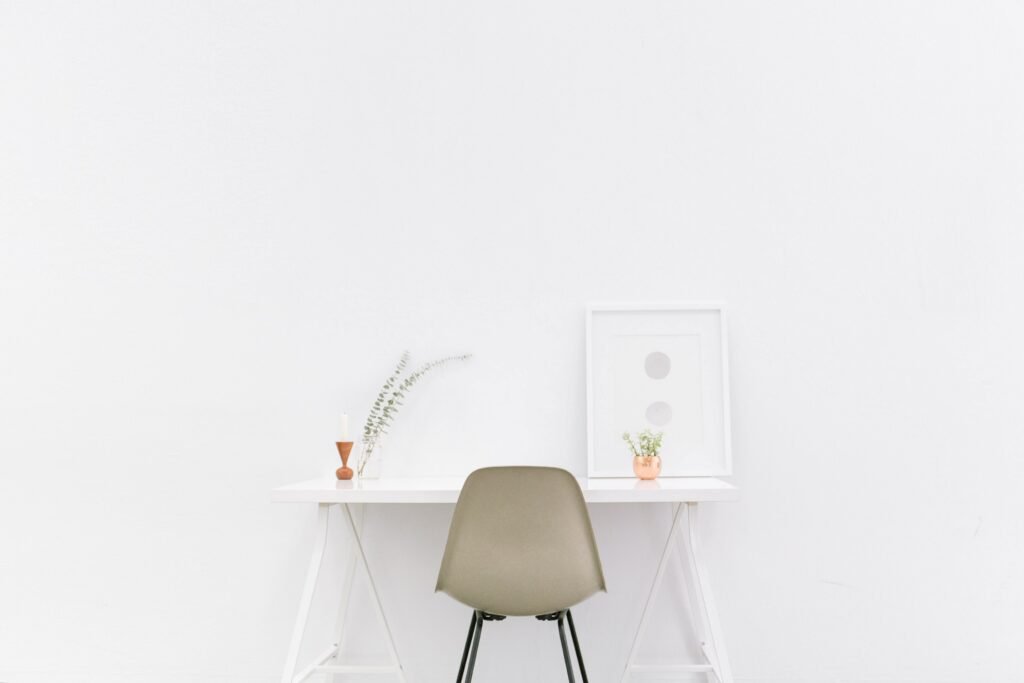Minimalism in Home Staging & Interior Design:
An approach to design emphasizing simplicity, functionalityFunctionality in Home Staging & Interior Design: The ability of a space to serve its intended purpose efficiently and comfortably. Staging considers furniture function, traffic flow, and accessibility to optimize everyday living. The Importance of Functionality in Home Staging - Why it's Somethi... More, and decluttering"Decluttering" in Home Staging & Interior Design: Removing unnecessary items from a space to create a sense of order, spaciousness, and organization, making it appear larger and more appealing to buyers. The Importance of Decluttering in Home Staging - Why it's Something to Consider Decluttering... More. In staging, minimalism uses clean lines, neutral colorsNeutral Palette in Home Staging & Interior Design: A color scheme primarily composed of neutral tones like white, gray, beige, and black. In staging, a neutral palette creates a versatile canvas that allows buyers to envision their own décor and personalizes the space. The Importance of a Neutr... More, and minimal furniture to create a spacious and serene atmosphere, attracting buyers who value uncluttered living.

The Importance of Minimalism in Home Staging – Why it’s Something to Consider
Minimalism in home staging is important as it creates a clean, uncluttered space that allows the home’s features to stand out. This styleStyle in Home Staging & Interior Design: The overall aesthetic or design language chosen for a space, influencing furniture selection, décor, color palette, and textures. The Importance of Style in Home Staging - Why it's Something to Consider The Style chosen in home staging sets the overall t... More is characterized by simplicity, clean lines, and a monochromatic color palette"Color Palettes" in Home Staging & Interior Design: The range of colors chosen for a space, including walls, furniture, fabrics, and décor, setting the overall mood and influencing the perception of size, light, and warmth. The Importance of a Color Palette In Home Staging - Why It's Something ... More. It appeals to buyers who appreciate a space that feels open, serene, and free of distractions. MinimalistScandinavian Style in Home Staging & Interior Design: A minimalist and functional design approach featuring clean lines, light wood tones, white walls, and pops of color. The Importance of Scandinavian Style in Home Staging - Why it's Something to Consider Scandinavian Style is significant in ho... More staging can make a home feel"Aesthetic" in Home Staging & Interior Design: The overall feeling or vibe of a space, encompassing the chosen style, color palette, textures, and furniture, and evoking a specific mood or impression. The Importance of Aesthetic In Home Staging - Why It's Something to Consider Aesthetic, encompa... More larger and brighter, which is appealing to potential buyers.
When considering minimalism in staging, it’s important to strike a balanceVisual Weight in Home Staging & Interior Design: The perceived heaviness or lightness of objects and elements within a space, influencing balance and visual interest. The Importance of Visual Weight in Home Staging - Why it's Something to Consider Visual Weight in home staging refers to the perc... More between simplicity and warmth. The space should feel inviting and comfortable, not cold or austere. Minimalist staging requires careful selection of a few key pieces of furniture and decor that convey style"Accessorizing" in Home Staging & Interior Design: The act of adding decorative elements to a space, like placing throw pillows on a sofa or arranging books on a coffee table, to complete the look and inject personality. The Importance of Accessorizing In Home Staging - Why It's Something to Con... More and sophistication. This approach can be particularly effective in modern homes or for targeting buyers who prefer a streamlined, contemporary lifestyle.
Tips and Best Practices when Utilizing Minimalism in Home Staging
Minimalism in home staging focuses on simplicity, clean lines, and a pared-down approach. Best practices include:
Less is More: Adopt a less is more approach. Use only essential pieces of furniture and decor to avoid clutter.
Neutral Color PaletteTheme in Home Staging & Interior Design: A unifying concept or inspiration for a staged space, influencing décor choices, color palettes, and overall ambience. The Importance of Theme in Home Staging - Why it's Something to Consider A Theme in home staging helps to create a cohesive look and fe... More: Stick to a neutral color palette to create a serene and uncluttered space.
Functionality: Each item in the room should serve a purpose. Avoid purely decorative items"Accessories & Antiques" in Home Staging & Interior Design: Decorative elements like vases, sculptures, throws, or vintage finds that personalize a space, add texture and pops of color, and tell a story about the homeowner's style. The Importance of Accessories & Antiques In Home Staging... More that do not add functional value.
Maximize Space: Use minimalism to make spaces appear larger and more open.
Quality Over Quantity: Choose a few high-quality pieces over multiple lesser-quality items.

